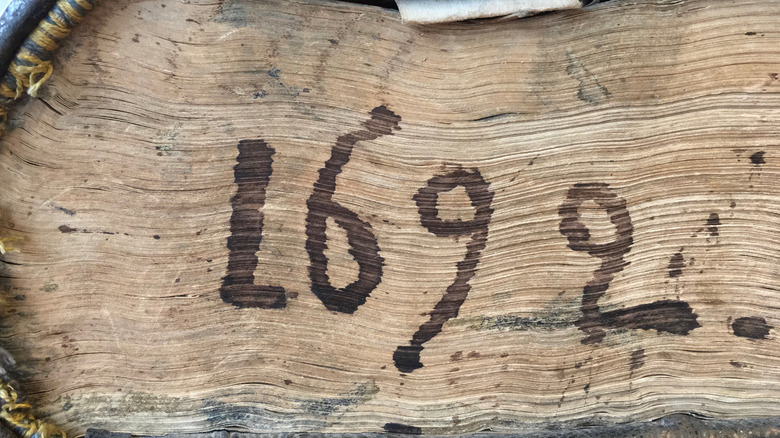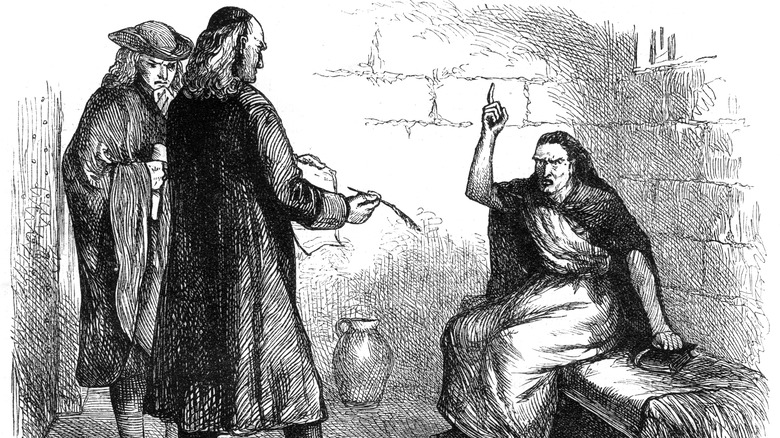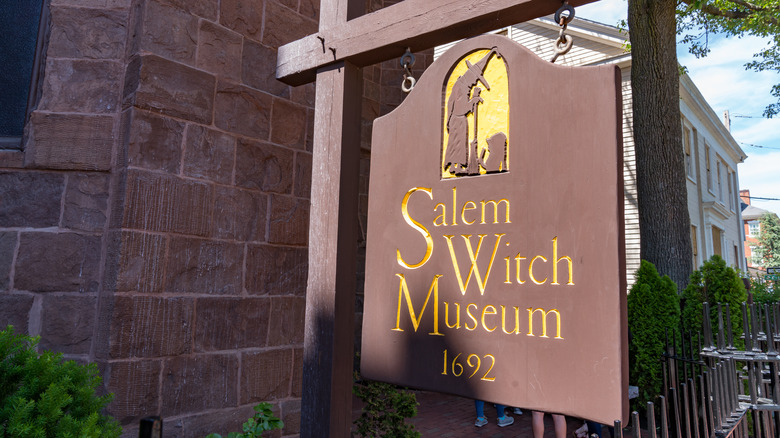The Salem Witch Trials Myth Everyone Believes
There are a lot of myths out there about Salem, Massachusetts, circa 1692. Let's get the first one out of the way: the people who died in the Salem witch trials were not witches. They were law- and church-abiding citizens who were wrongfully accused of witchcraft. While the number of people today who identify as witches practicing traditional crafts like herbalism and other energy-infused work is formidable (via The New York Times), it was not a thing that a person in Puritan New England claimed, but rather something they were accused of by someone who might not have had the best of intentions.
One horrific image people have of this time period is that of accused witches being burned at the stake. According to History, this was, shamefully, a common occurrence in the European witch hunts between the 15th and 18th centuries, during which a staggering 50,000 people were executed for allegedly practicing witchcraft. Many of the accused had roles like herbal healers and midwives, highly in-demand skills for medieval times. If they happened to have some sort of dispute with a neighbor, they could be accused of any number of awful things, like curdling milk, livestock illness and death, and terrifying children by sending them visions. Laws taken from religious texts demanded practitioners of malicious witchcraft be punished by fire. This, however, was never the case in Salem.
Gallows Hill
Not that what actually happened is any better, but for history's sake and the memory of the victims, it's best to get things right. Smithsonian magazine says there were about 200 Salem, Massachusetts citizens accused of witchcraft between 1692 and 1693, 20 of whom were executed: between June and September of 1692, 19 accused were hanged on what would later come to be known as Gallows Hill, and a 20th accused person was pressed to death with stones for refusing to dignify the charges with a "Guilty" or "Innocent" plea. Many others suffered and died while in jail awaiting trial.
Via Smithsonian, five days after the first hanging victim, Bridget Bishop, was killed, Cotton Mather (a respected local minister) wrote a letter urging the court to not allow "spectral evidence" (visions and/dreams allegedly sent out by a witch to their victim in order to torment them) in the trials, as none of it could be proved and depended entirely on the integrity of the accusers. His plea was ignored, and another 19 people went on to die in three months. In October, Mather's father, then the president of Harvard, supported his son's request, saying, "It were better that 10 suspected witches should escape than one innocent person be condemned."
The future of Salem
Also per Smithsonian, 10 years later, in 1702, after much soul-searching and discourse about the atrocities committed, the General Court declared the trials and executions unlawful. Nine years later, the victims' good names were restored, and their heirs were paid £600 in restitution. The state of Massachusetts would not formally apologize for these events until 1957.
Today, Salem is a living memorial to the victims of 1692, complete with museums dedicated to the trials, while wholeheartedly embracing witchcraft practitioners and the witchcraft-curious. Via a proclamation signed by the Governor and the Treasurer of the Commonwealth of Massachusetts, Salem even has an "Official Witch" in longtime resident and open practitioner of the craft, Laurie Cabot; the proclamation was in recognition of work that Cabot had done to benefit children with special needs.
A statement on Cabot's website reads, "While this certainly was a compliment to Laurie Cabot, it was and is today a symbol of hope for all witches who do good works on behalf of their community and nation. Equally as important, it serves as a testament that witches have a place in America today and are recognized as practicing a legitimate and honorable religion which shows a path of dedication for the good of all."


